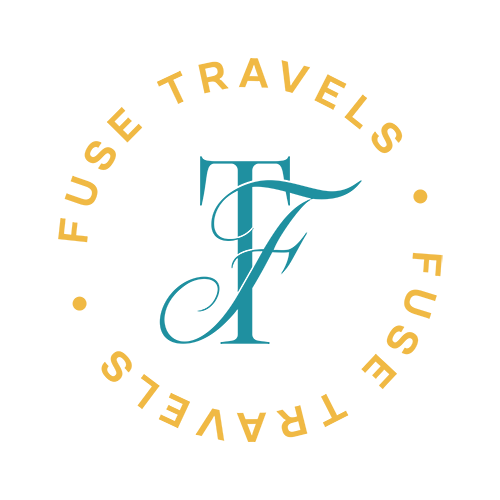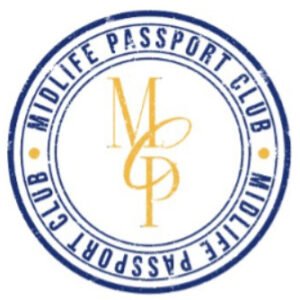Berlin cast its spell on us from the moment we arrived for our 28-day European adventure this past September. Out of all the incredible destinations on our itinerary, Germany’s capital truly exceeded our expectations during the 3 magical nights we were able to spend there. Thanks to the wonderful hospitality of Visit Berlin, we absorbed as much of the city’s rich history, art, culture and nightlife as we could in our short time.
With just 72 hours to explore such an iconic and dynamic city, we packed in the sights by day and immersed ourselves in Berlin’s electric atmosphere at night. From touring the colorful street art to strolling the somber Holocaust Memorial, glimpsing the city’s Cold War past to partying alongside friendly Berliners in the hippest clubs, Berlin surprised us, moved us and enthralled us.
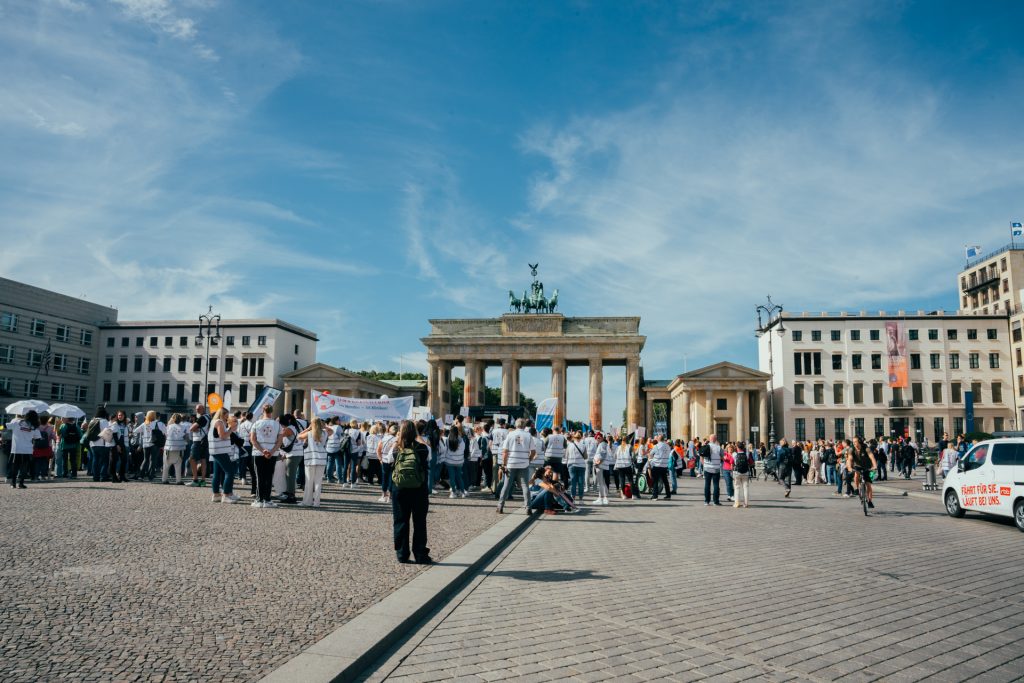
Now that we’re home, I’m so excited to share all of the details of our 3 days in Berlin so you can plan your own unforgettable trip. Follow along for tips on where to stay, what to see, where to eat, and how to fully experience the best of Berlin’s infectious energy and gritty-yet-glamorous vibe. Get ready to fall in love with this incredible city!
Where to Stay in Berlin
We stayed at the fabulous Precise Tale Hotels at Potsdamer Plat in the Mitte area. We loved this area as we felt it was close enough to important historical points we wanted to visit and also very easy to get around as the bus stopped right in front of our hotel.
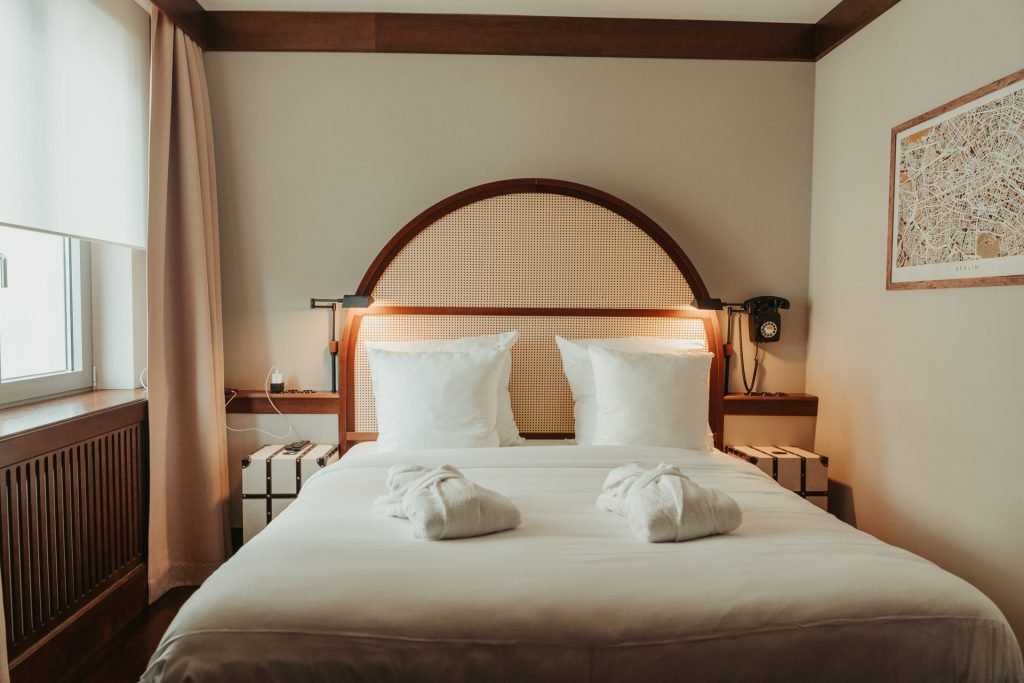
Here are some other areas we found while researching for our trip. We love finding hotels on Expedia.com.
- Prenzlauer Berg: This neighborhood is recommended as a charming area to stay in Berlin. It has a unique art culture, plenty of amazing places to eat and drink, and is home to many boutique hotels and guesthouses.
- Mitte: Mitte is the city center and is the best area to stay in Berlin for traditional sightseeing. It encompasses many of the city’s tourist hubs, including Alexanderplatz, Potsdamer Platz, the Nikolaiviertel, and Unter den Linden. It has a mix of sights, shops, cafes, restaurants, and clubs.
- Friedrichshain: This neighborhood is recommended as a great area to stay in Berlin for its excellent connections by tram and proximity to Ostkreuz. It has a bunch of great restaurants and bars around, and Stayery is a super cool aparthotel right in the middle of Friedrichshain.
- Charlottenburg: Charlottenburg offers a genteel and quiet residential vibe, according to Wandertooth. This Berlin district has high-end restaurants, cafes, and shops, and is a great place to stay if you’re looking for a more upscale experience.
- Kreuzberg: Kreuzberg is one of the most multicultural districts in the city, thanks mainly to the Turkish and Middle Eastern ‘guest-workers’ that live and work around the Kottbusser Tor area. It’s also one of the liveliest and best places to stay in Berlin for nightlife thanks to a plethora of bars and clubs.
If you’re a young couple looking for nightlife options, you may want to check out the districts Kreuzberg, Friedrichshain, and Neukölln. A popular, central area to stay is around Checkpoint Charlie.
Our Stay at The Precise Tale Hotel
This was our favorite hotel during our 28 day trip and we were treated amazingly by the welcoming staff. The Precise Tale Hotel is designed with travelers in mind. Stepping inside instantly felt like traveling back to Berlin in the 1920s era.
The art deco details throughout the lobby and rooms are stunning – geometric patterns, bold colors, and lavish furnishings that evoke the interwar period. Our bedroom felt so spacious and I loved the stylish bathroom tiles and accessories.
My favorite spot was the quiet lounge area, perfect for reading or catching up on work, with a convenient coffee station right there.
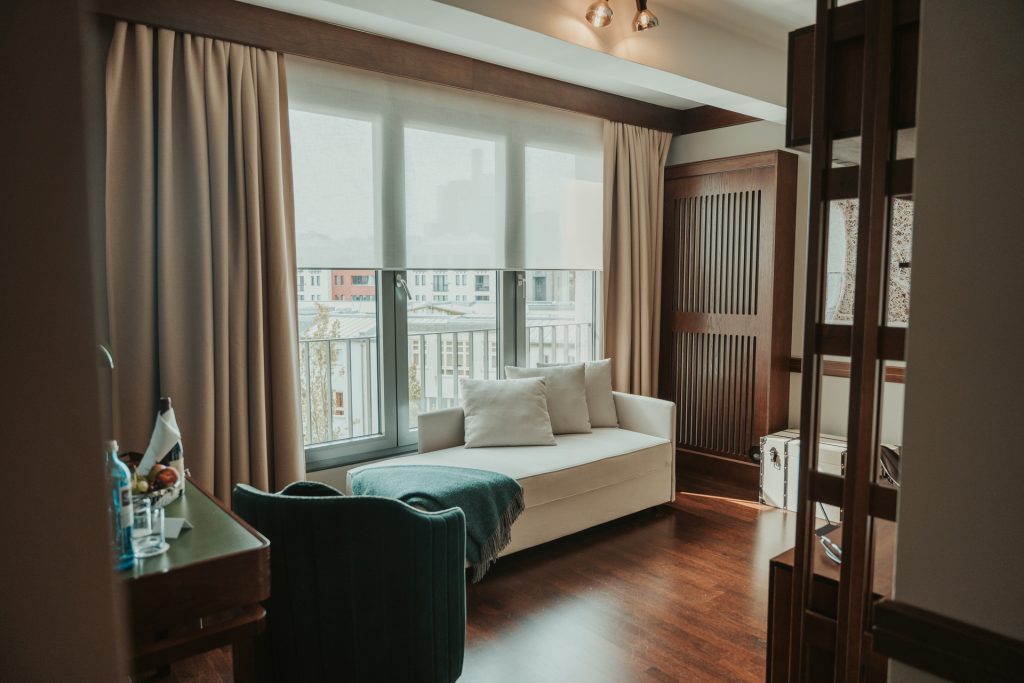
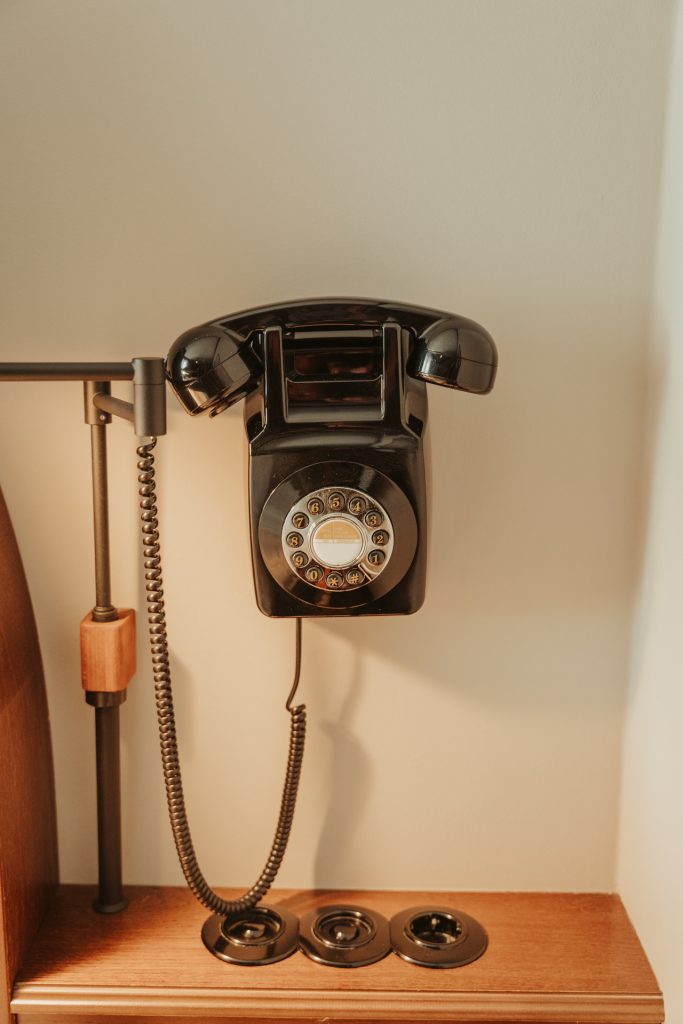
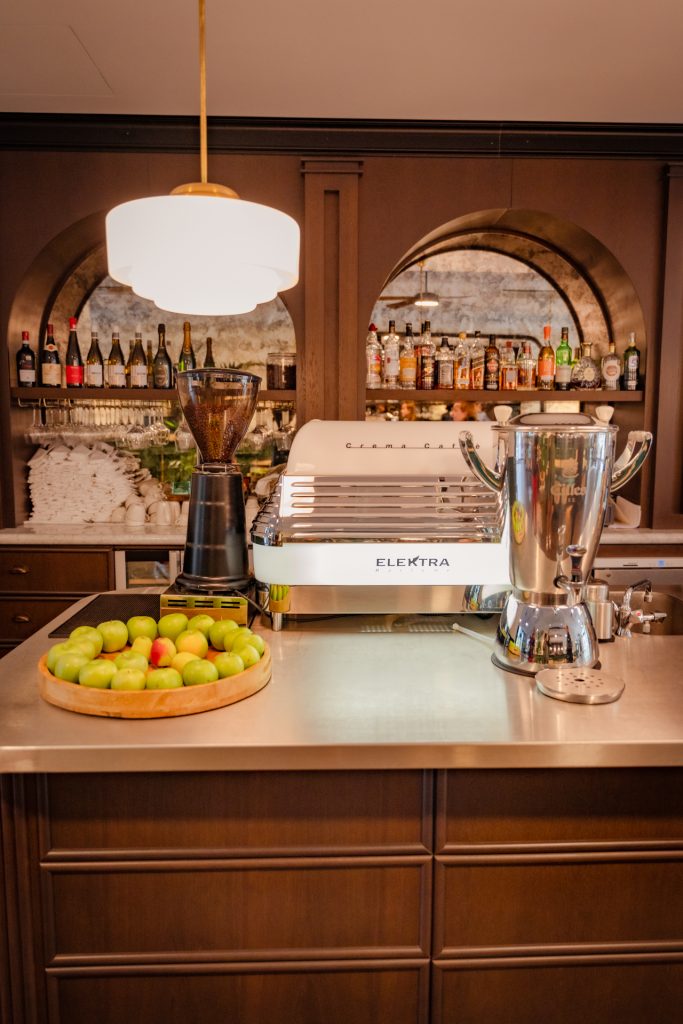
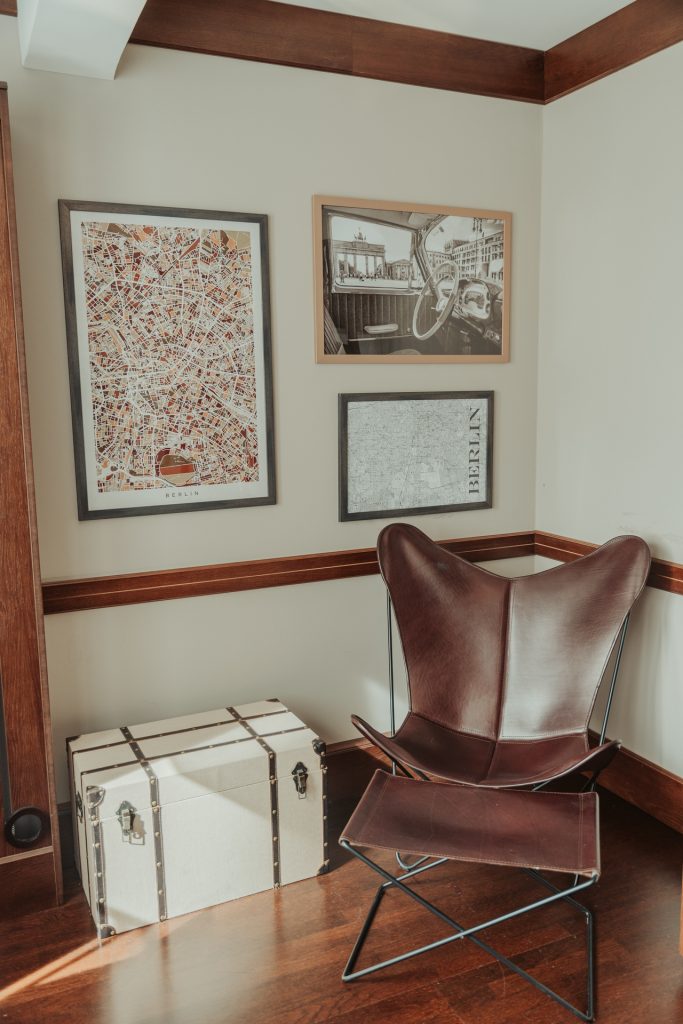
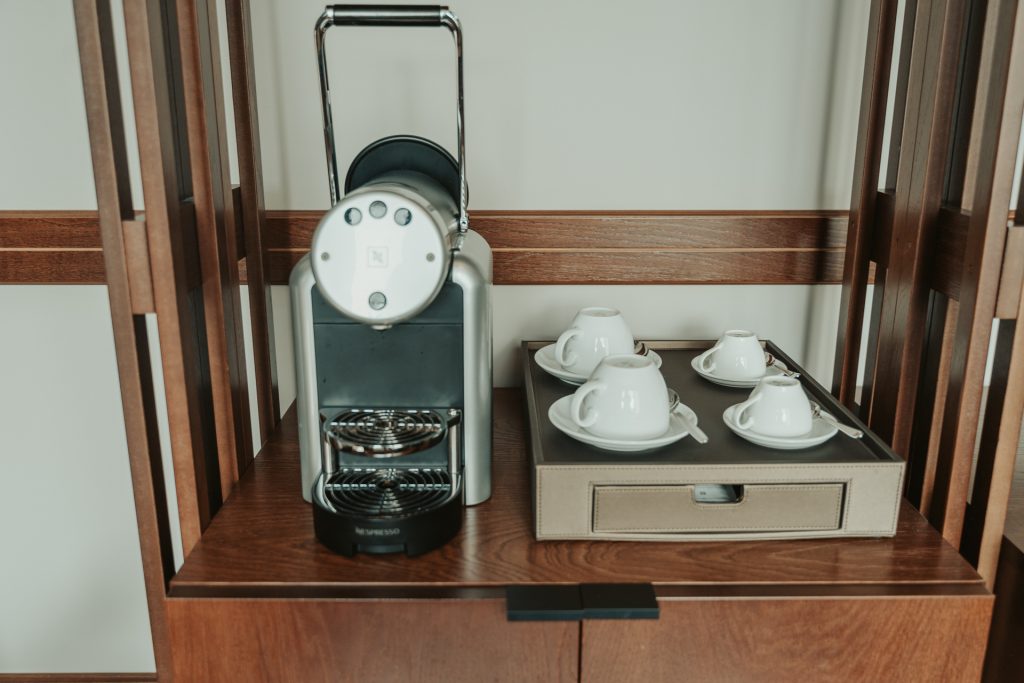
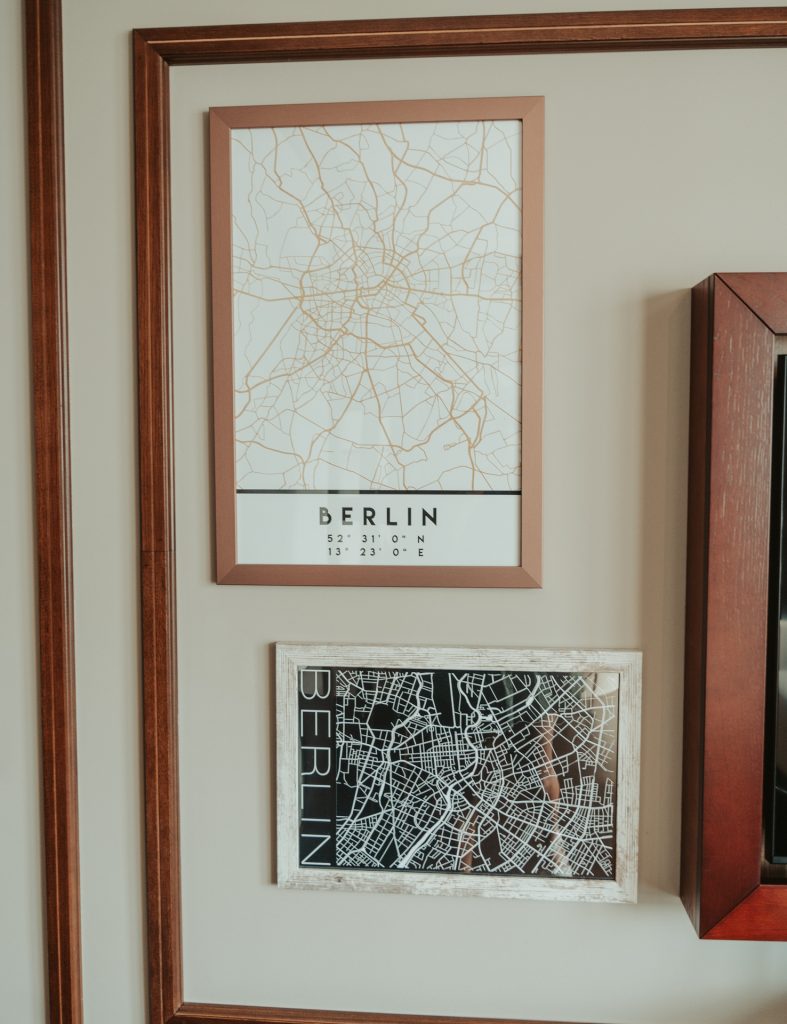
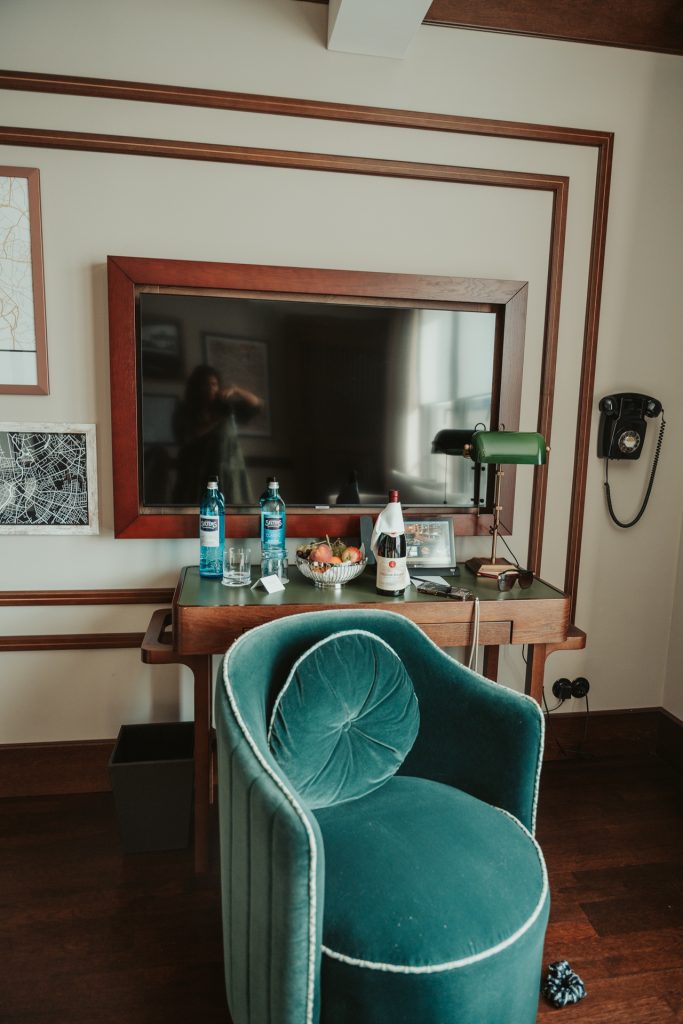
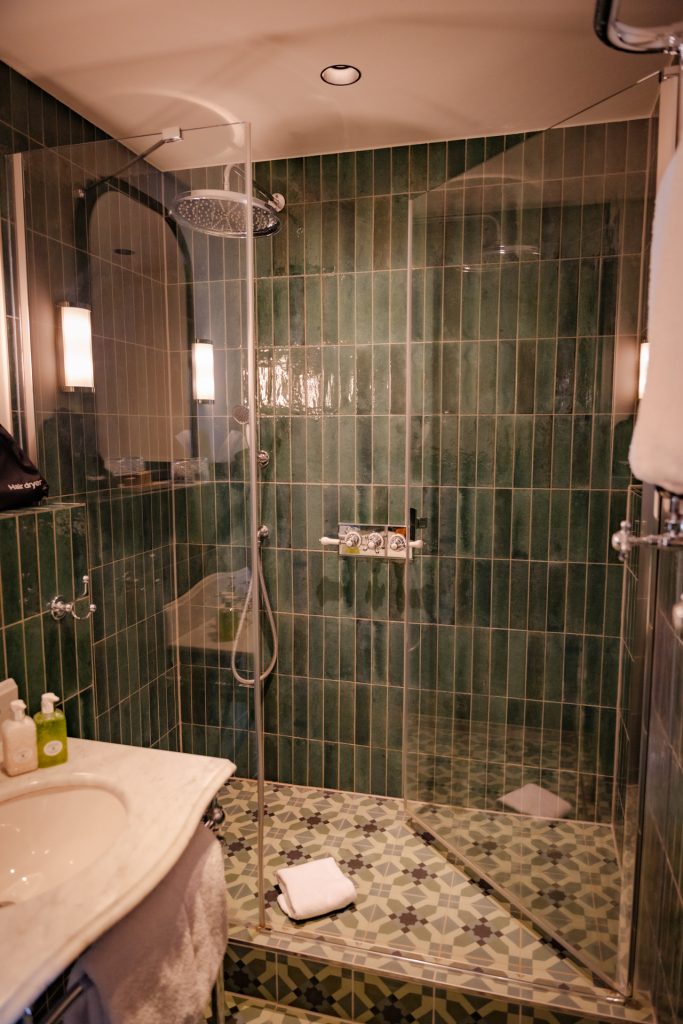

The daily breakfast was phenomenal. The cuisine, overseen by Assaf Granit, prepare a wide array of delicious dishes and everything we tried was incredible. The atmosphere in the restaurant also takes you back in time.
We got to check out Berta, the restaurant next door, so I’ll be sure to share more details about that spot too. The Precise Tale staff treated us wonderfully, and I slept so comfortably in the luxurious bed each night. This boutique hotel truly feels like a home away from home.
We even received a preview of their new spa opening in 2024 – it will be a relaxing oasis perfect for travelers staying right in central Berlin. Let me know if this helps capture the Precise Tale Hotel specifically! I’m happy to provide any other details you need. Overall we strongly recommend this hotel.
Check out Precise Tales Berlin

Are 3 Days Enough to Visit Berlin?
As I get older, my style of travel has evolved to become more slow-paced – not because of age but because I’ve come to prefer deeply immersing myself in each destination. This mentality shift made me realize that to truly experience the spirit and history of a city like Berlin, three days is the bare minimum needed, and four days or longer is ideal.
Of course, this question also depends heavily on your personal travel style and priorities. If you’re intent on checking all the major tourist boxes, three packed days in Berlin may suffice. But for those who prefer leisurely discovery and aim to scratch beneath the surface, I’d heartily recommend building in more time to let Berlin’s complex past and dynamic energy unfold.
With centuries of history and cultural layers built upon one another, Berlin begs to be uncovered slowly. No matter how efficiently you plan your days, you’ll likely still feel the pull to dig deeper across neighborhoods like museums never seem to close. For first-timers, I’d suggest four days at a minimum to properly see top sights like the East Side Gallery or Holocaust Memorial while also leaving time to get delightfully lost in Berlin’s eclectic side streets.
Berlin Travel Tip
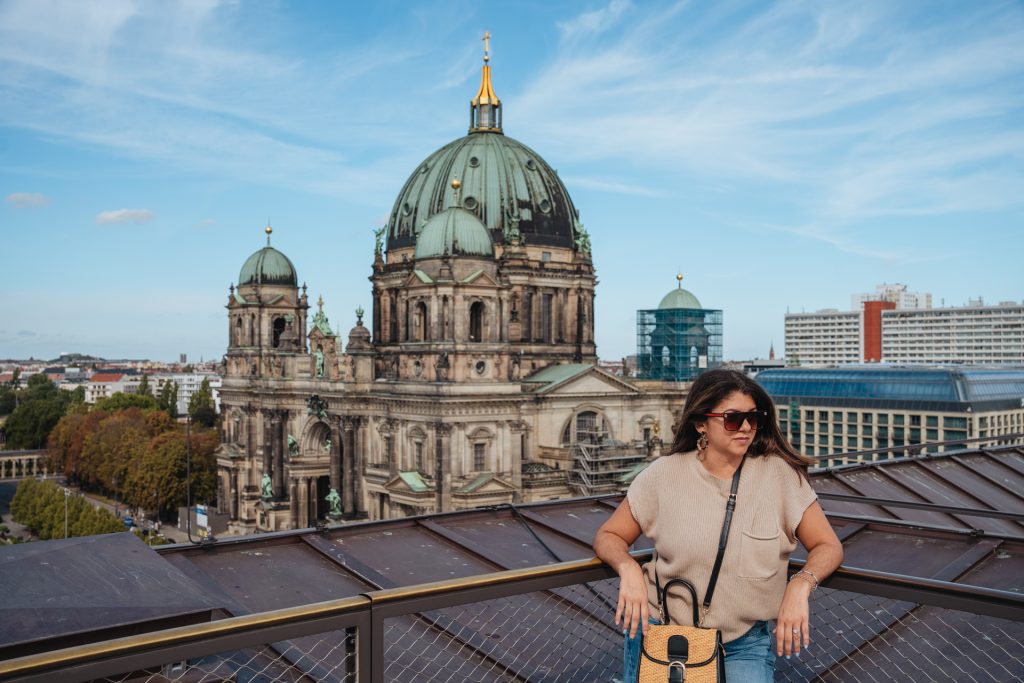
Do yourself a favor and purchase the Berlin Welcome Card! This was a lifesaver for us for transportation and other discounts.
Here are some reasons why getting the Berlin Welcome Card is recommended for a 3-day trip to Berlin:
- Saves you money – The card provides free transportation on all public transport including buses, trains, trams and ferries throughout the city. It also gives you up to 50% discount on over 200 top attractions, tours, restaurants and more. This can lead to huge savings over 3 days of sightseeing.
- Easy transportation – With the Welcome Card you don’t have to worry about buying metro tickets. You can seamlessly get around Berlin’s excellent public transit system without any hassles.
- Skip the lines – Many of Berlin’s popular attractions like the TV Tower, Reichstag and museums allow you to skip long ticket lines with the Welcome Card. This saves you precious time for sightseeing.
- Discover hidden gems – Lesser known attractions and neighborhood tours are also included. You can find and explore cool spots off the beaten tourist path.
- Hop-on-hop-off savings – The card bundles in discounts on HOHO bus tours, another great way to see the city’s sights.
- Valid for multiple days – You can spread out your activities over all 3 days and get the most value from the card.
- Experience nightlife – Special rates at venues let you experience Berlin’s buzzing nightlife at a discount.
- Family-friendly: If you’re traveling with children, the Berlin WelcomeCard is an even better value. Three children up to 14 years old can travel for free with an adult Berlin WelcomeCard holder, and they also receive additional discounts at many attractions.
So, in summary, the Berlin Welcome Card is highly recommended for 3 days in Berlin to maximize your money, time, and experience while exploring this amazing city. The more you can see and do, the better!
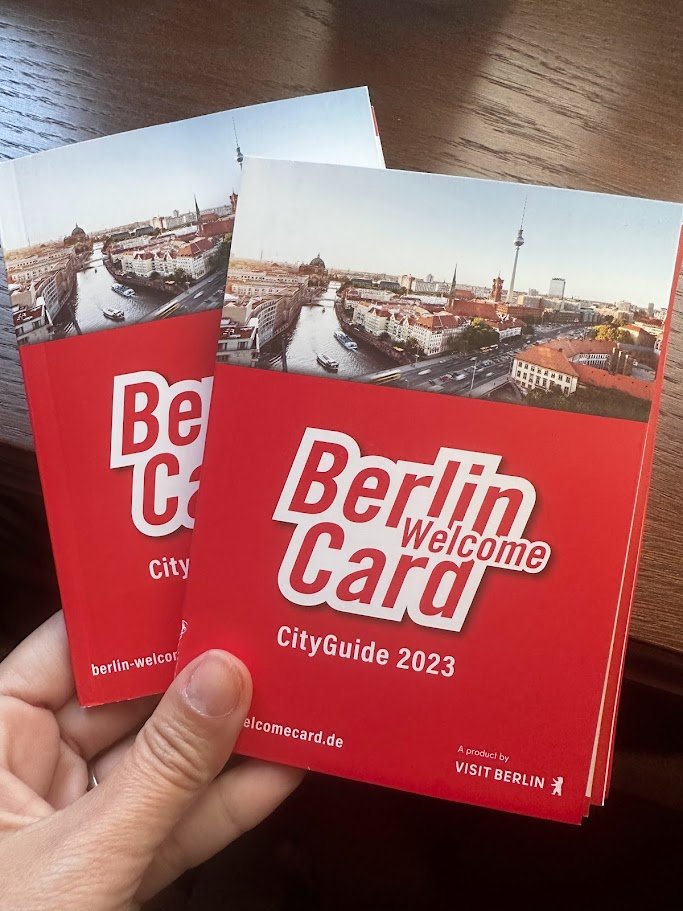
3 Days in Berlin Itinerary
Our day one was more of a half day, so we checked into our hotel and walked straight to Checkpoint Charlie. We saw the exhibit there and walked around reading the info. It was a bit surreal being there, such an important location for history of Germany and democracy.
Here are some of the main sights and attractions around Checkpoint Charlie in Berlin:
- The Checkpoint Charlie crossing point itself – This preserved border crossing point is one of the most famous sites in Berlin. The original guard house now has an exhibition about the history of the Berlin Wall.
- Checkpoint Charlie Museum – This museum near the crossing documents the history of the Berlin Wall and methods people used to escape East Berlin. It has many original artifacts from the era.
- Outdoor Berlin Wall exhibits – Nearby you can see an original watchtower from the Wall and segments of the wall painted by artists.
- Haus am Checkpoint Charlie – A unique building directly at the former border houses some additional Berlin Wall exhibits.
- Zimmerstrasse and Friedrichstrasse – These streets near Checkpoint Charlie were famous crossing points between East and West Berlin. They now have exhibits about the border.
- Topography of Terror – Close by is this museum on the site of the former Nazi SS and Gestapo headquarters with exhibitions about the Holocaust and WWII history.
- Gendarmenmarkt – This beautiful historic square with the German and French cathedrals is a short walk away.
- Jewish Museum – One of Berlin’s most important museums is about a 10 minute walk from Checkpoint Charlie.
So in summary, Checkpoint Charlie and its surroundings offer an immersion into the Cold War era and Berlin’s 20th century history, making it a must-see area.
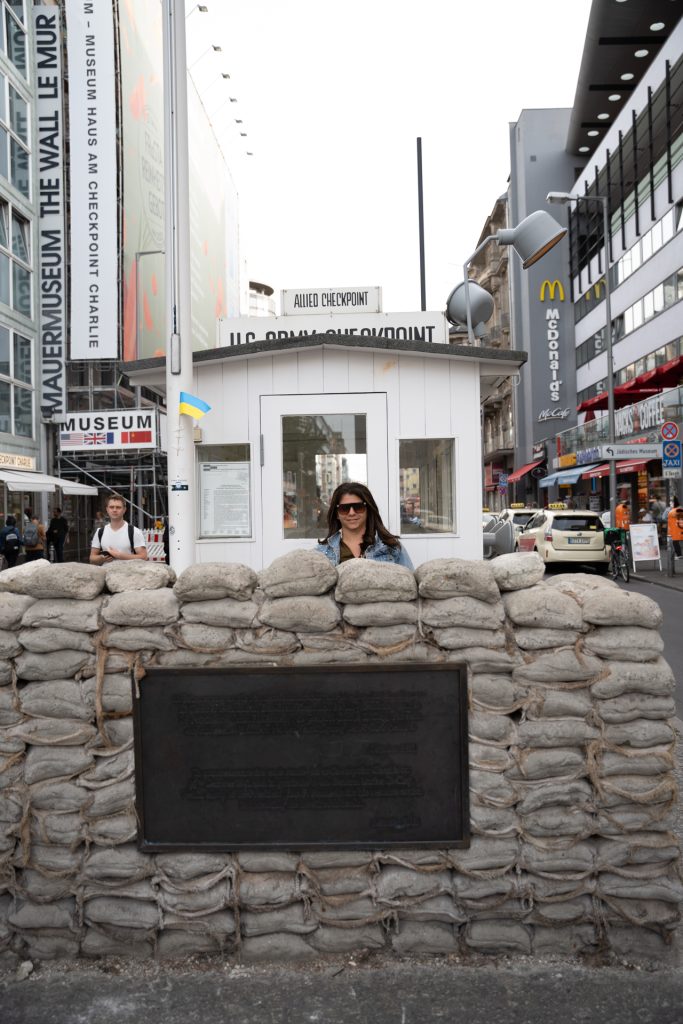
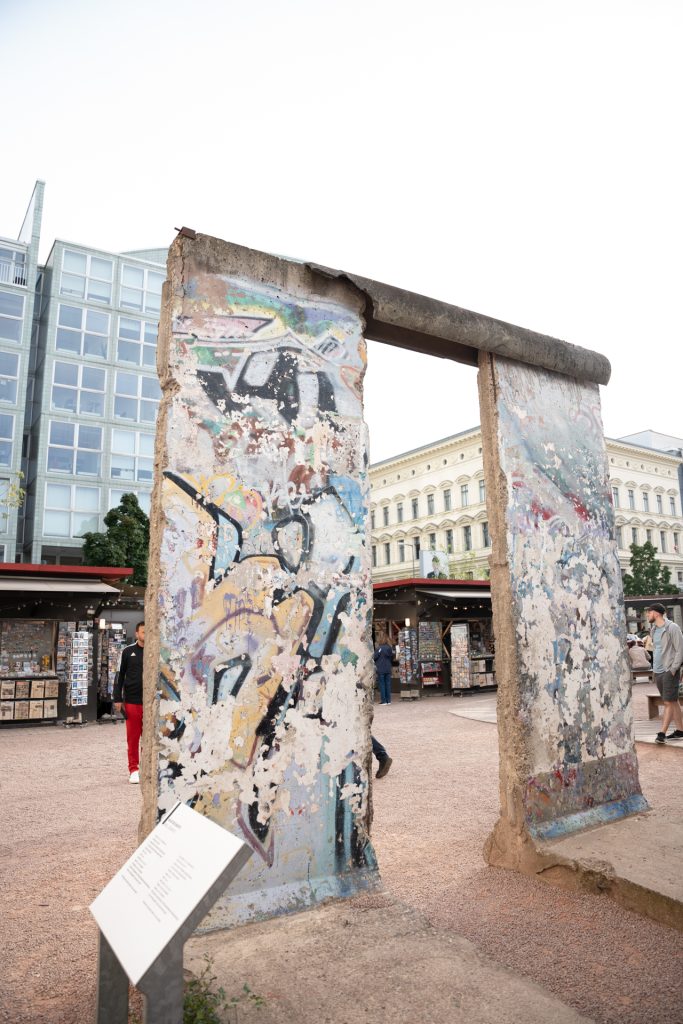
We then headed back to the hotel, and we were able to get a reservation at the fantastic Berta, which is a cool food experience to do if you have time.
Berta Restaurant
If you are looking for a unique culinary experience, I recommend you book a table at Berta Restaurant.
Alright, food adventurers, how does a Berlin pitstop with an Israeli flair sound? Yes, you heard me right. Meet Berta, a culinary love letter written by chef Assif Granit to his grandma and muse—Berta herself. In a city known for its fusion of old and new, Berta embodies this spirit but takes it up a notch. A tribute to tradition, a nod to modernity, and a generous sprinkle of freedom—Berta is less a restaurant and more an experience.”
About the Name:
“Let’s start by paying homage to the woman who started it all. Berta is named after Assif Granit’s inspirational grandma. The restaurant’s motto sums it up best: ‘BERTA IS AN ODE TO FREEDOM. WHERE EVERYTHING IS PERMITTED AND NOTHING IS OFF LIMITS.’ Now, if that doesn’t set your wanderlust aflame, I don’t know what will.”

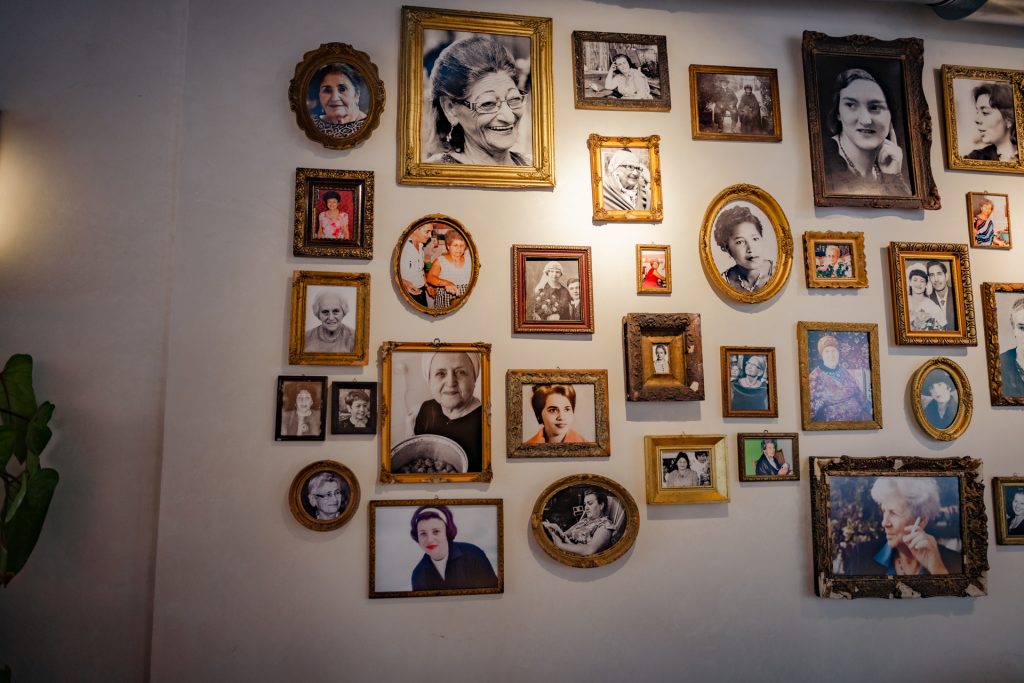
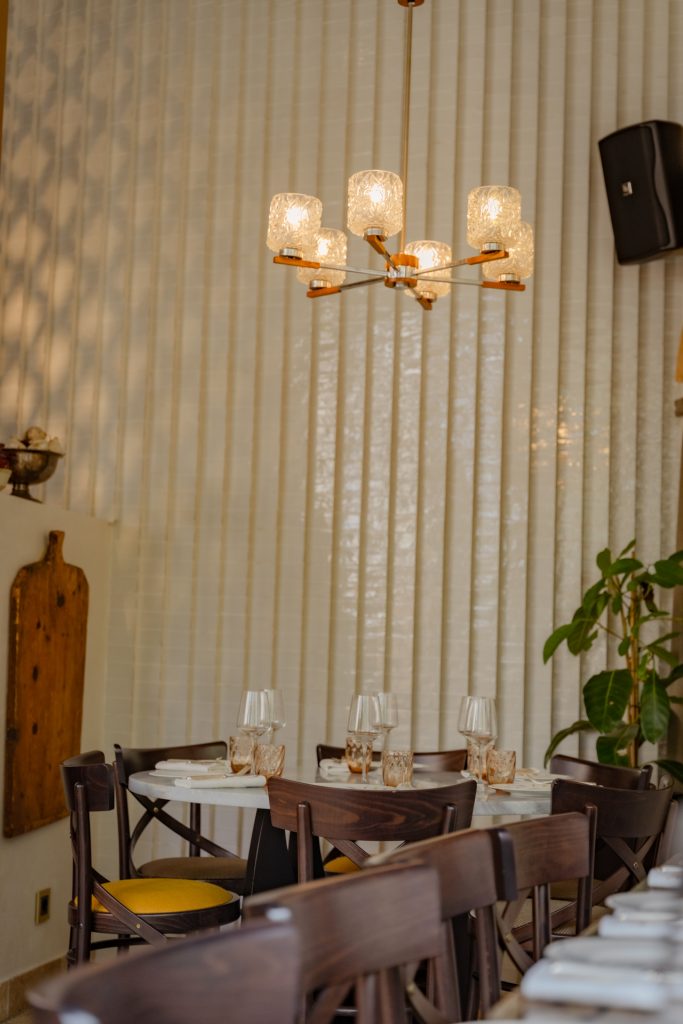
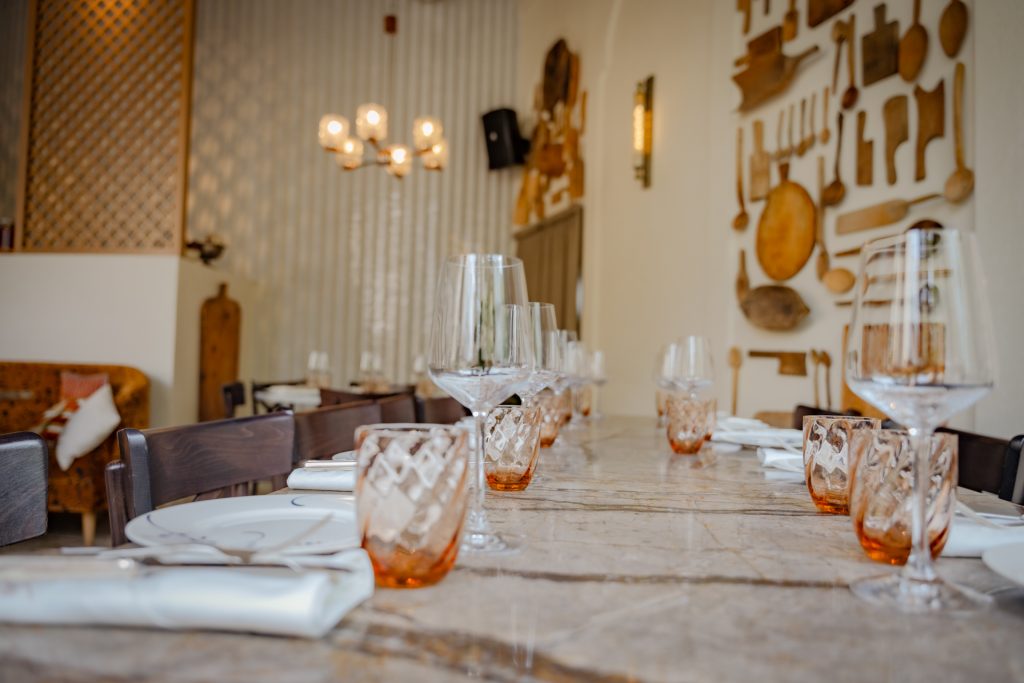
Vibe and Experience:
Initially, you might be tempted to avoid the busy bar seating, but hold your horses! Because sitting at the bar places you in the heart of the action. It’s like being backstage at a concert but with the delightful aroma of Middle Eastern spices wafting through the air. The bartenders are as lively as the chefs, and there’s a feeling of community here that’s as inviting as a warm pita.”
Berta’s Philosophy:
“This isn’t just a restaurant; it’s a journey. With a focus on exploring origins and traditions, Berta captivates you with dishes that are an amalgamation of traditional family recipes and modern culinary techniques. It’s where the familiar comforts of home meet the excitement of the unknown—just like any great travel experience should be.”
It was hard to find the menu online as I believe they are seasonal menus, but I had to try the aubergine brulee and we loved the different dips with bread! Some people love the anchove butter, so ask if your dips come with that. The portions for the appetizers are large.
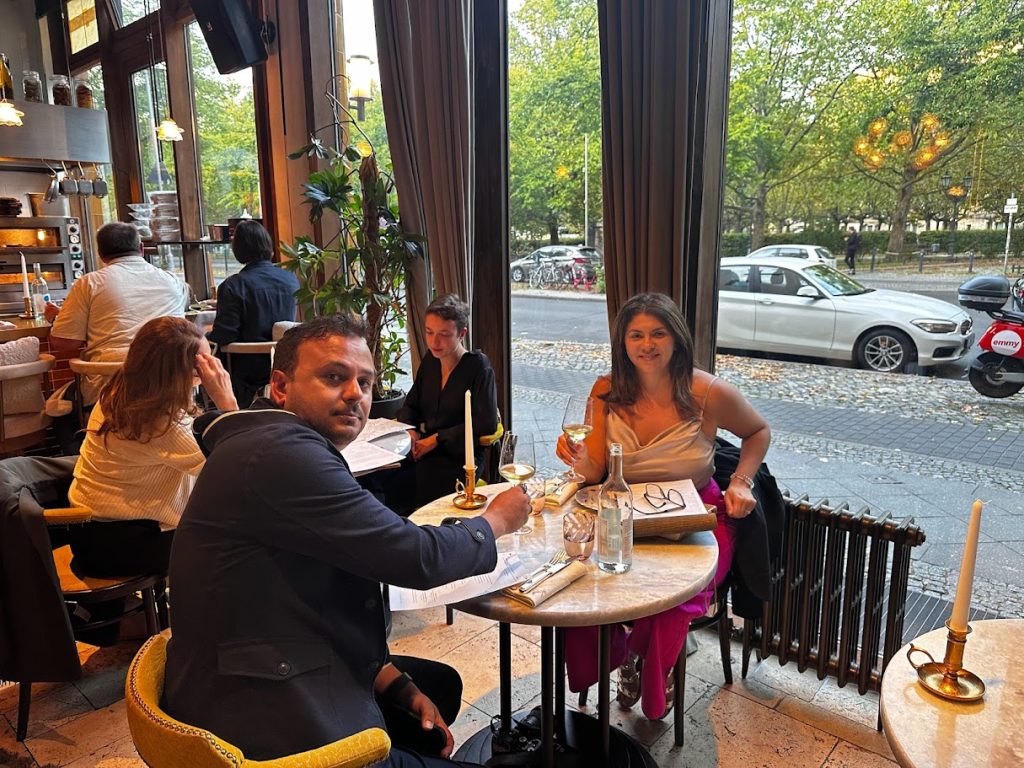


Day 2 in Berlin
We were fortunate to have Arne as our walking tour guide. With his extensive knowledge of architecture and history, as well as a clear passion for 1920s Berlin (he even has a podcast and book on the era!), Arne provided a uniquely insightful perspective.
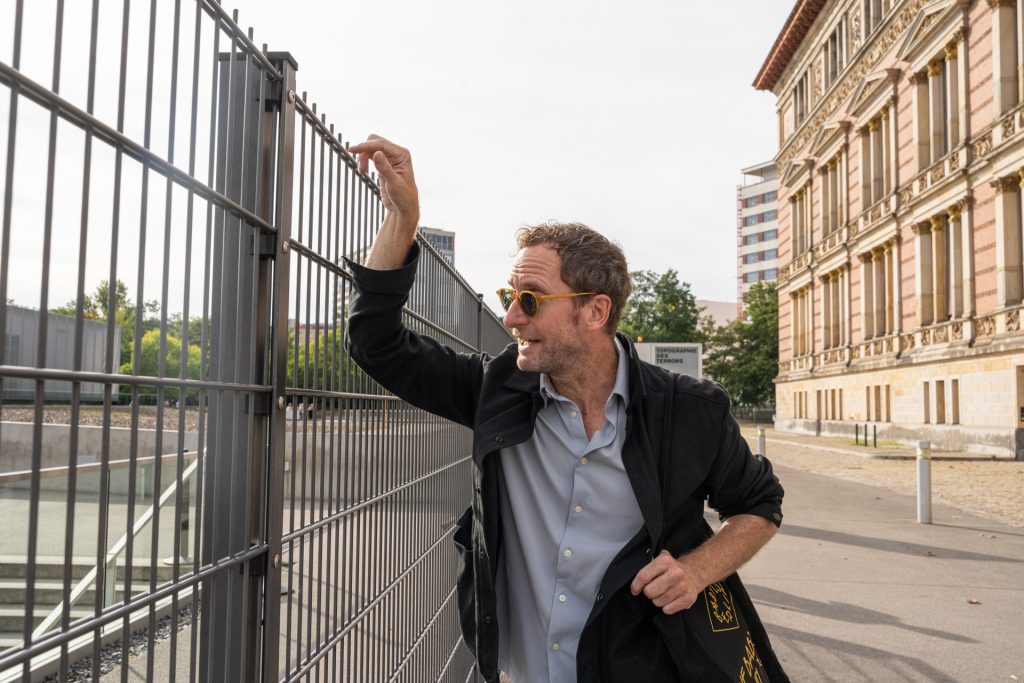
Topography of Terror
We met near the Topography of Terror and walked around viewing remnants of the Berlin Wall. Arne recounted compelling stories about the wall’s discovery and various escape plans, as well as details on the government buildings representing each of Germany’s four political eras.
The Topography of Terror is an indoor and outdoor history museum located in the former grounds of the Gestapo and SS headquarters during the Nazi regime. The excavated ruins of the original buildings are preserved and the museum contains exhibitions documenting the chronology of the Holocaust and Nazi atrocities throughout Europe. It’s a chilling reminder of the way Nazi oppression spread from the streets of Berlin.
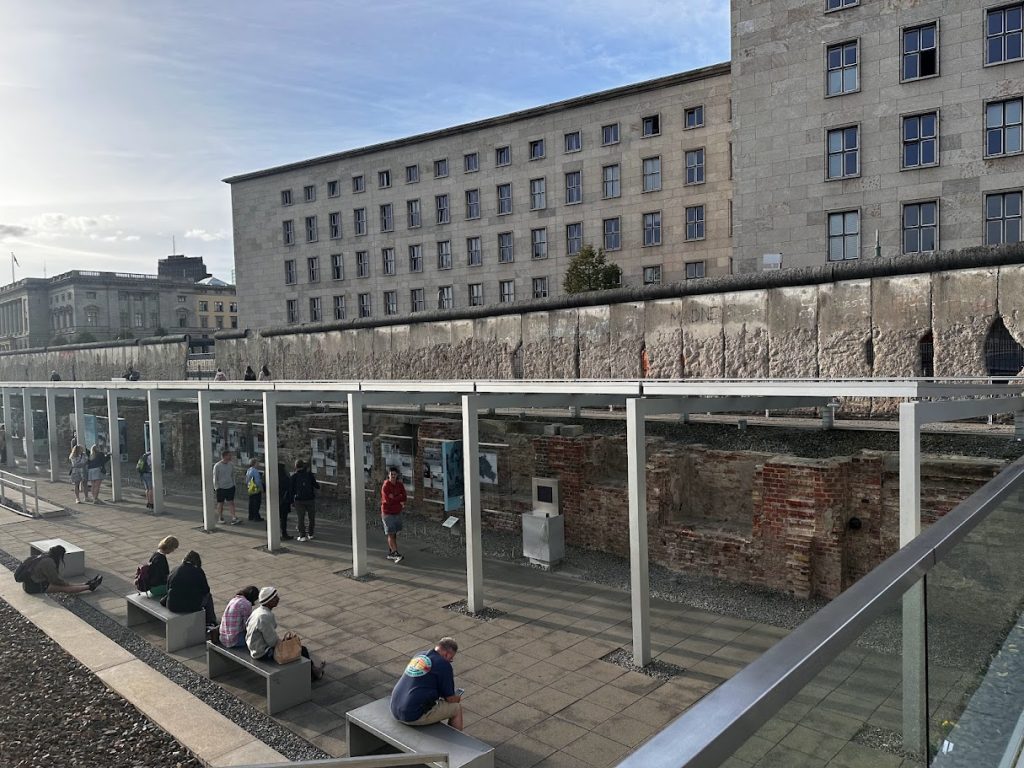
Sony Center
The Sony Center is a modern, multifunctional complex located in Potsdamer Platz in the heart of Berlin. It was built in 2000 on an area that was once a no man’s land separating East and West Berlin for nearly 30 years during the Cold War era. The Sony Center has a mix of restaurants, shops, offices, apartments and event spaces all under a spectacular tent-like glass roof. It transformed what was once a barren strip of land into a living center of business and culture.
As we strolled to the Sony Center, we noticed a tour group that turned out to be for hearing-impaired individuals. It was heartening to see tour options for all kinds of travelers in this day and age.
At the Sony Center, we learned how this area was once a no man’s land but is now a vibrant, modern neighborhood. No man’s land areas were vacant, often contained anti-vehicle trenches and were guarded constantly to prevent crossings. The Sony Center now stands on part of what was the former no man’s land.
Holocaust Memorial
Our next stops were especially poignant. We first visited the Holocaust Memorial, with its wavelike, tombstone-esque concrete slabs. Arne explained that the creator left the meaning open to interpretation.
Walking through the lowering and rising ground, almost like a maze where perspectives shift, was an evocative experience. Arne mentioned some visitors are brought to tears here, contrasting with the laughter of children obliviously playing among the slabs. Each person is left to react to this powerful memorial as they wish.

More info on the Holocust Memorial in Berlin.
- It is officially called the Memorial to the Murdered Jews of Europe or Holocaust Memorial for short.
- The memorial was designed by architect Peter Eisenman and engineer Buro Happold. It opened in 2005.
- The memorial consists of 2,711 concrete slabs or stelae arranged in a grid pattern on a sloping field. The stelae are placed in long, straight rows but are of varying heights. This creates an abstract, wave-like landscape.
- Walking through the memorial, the ground drops away beneath your feet and the rows tower above you on both sides, evoking a sense of disorientation, confusion and loss. The memorial is meant to represent a supposedly ordered system that has lost touch with human reason.
- The abstract design requires personal interpretation, but the memorial is intended to commemorate the approximately 6 million Jewish victims of the Holocaust and promote reflection on the past atrocities.
- It is located near the Brandenburg Gate, in the center of Berlin. This prominent location in the heart of the German capital city holds symbolic significance.
- The site is just south of the information center which documents the holocaust and details the names of concentration camps and how many died in each.
- The memorial is only a short distance from the site of the underground Führerbunker where Hitler committed suicide in 1945 as the Allied forces closed in on Berlin.
- The proximity of the holocaust memorial to the place of Hitler’s death can be seen as speaking to remembering the victims and the end of the Nazi regime.
Overall this is a must stop in Berlin.
Brandenburg Gate
This was a highlight for my husband as it is such a historic landmark in Berlin that has great symbolic significance:
There were several protests around which seems to be a constant thing here.
- The Brandenburg Gate was built in the late 18th century as a neoclassical monument commissioned by Prussian king Frederick William II. It was one of the original 18 gates around Berlin’s city center.
- During the Cold War, the Brandenburg Gate sat right on the border between East and West Berlin. When the Berlin Wall was constructed in 1961, the gate became inaccessible from West Berlin.
- The Berlin Wall encircled West Berlin, so the Brandenburg Gate became a powerful symbol of the division of Germany and Europe between the communist Eastern Bloc and capitalist West.
- In 1987, US President Ronald Reagan gave a famous speech at the Brandenburg Gate challenging Soviet leader Gorbachev to “tear down this wall.” This heightened the gate’s symbolic significance.
- When the Berlin Wall fell in 1989, images of citizens crossing at the Brandenburg Gate became an iconic symbol of Germany’s reunification and the end of the Cold War division of Europe.

- Since 1990, the restored Brandenburg Gate has represented German unity. The quadriga statue on top, representing the goddess of peace, now looks out over a unified Berlin and Germany.
- The Brandenburg Gate stands as an enduring symbol of both the division of Berlin during the Cold War era, and its reunification as the capital of a democratic Germany. It represents the country’s turbulent 20th century history.
So in summary, the Brandenburg Gate has great symbolic resonance for its role in Berlin’s history and German political division and unity over the past centuries. It remains a major landmark in Berlin.
We felt the importance of freedom in the air and all that happened in Berlin in the name search for freedom and liberty. It was a special moment.
Eat Currywurst
To lighten the mood after the weight of the memorials, we passed under the iconic Brandenburg Gate and straight ahead found an excellent currywurst stand conveniently located across from the luxurious Hotel Adlon Kempinski. This five-star hotel facing the gate even offers a gourmet “currywurst and champagne” experience for over 200 euros!
We opted for the traditional currywurst and beer for a fraction of the price. The juicy pork sausage smothered in addictive spicy ketchup sauce was truly delicious. As we ate, I loved learning more about the origin story of currywurst, which was invented in Berlin back in 1949 by Herta Heuwer. She came up with the ingenious idea of combining fried sausage with a zesty ketchup and curry powder sauce.
This accidental invention became a beloved Berlin street food tradition that still thrives today. We felt so lucky to be eating authentic currywurst in its hometown, in the shadow of the Brandenburg Gate. The setting made it taste even more amazing!
Let me know if you would like me to expand or modify this improved section at all. I’m happy to keep refining it.
Heuwer started selling her creation at a street food stand in Charlottenburg. It quickly became popular with construction workers rebuilding the city after WWII.
The sauce was originally made from Heuwer’s own blend of ketchup, curry powder and other spices. She kept the recipe secret for years as currywurst’s popularity spread across Berlin.
@fusetravels Venture into Berlin's vibrant food scene with me! Here's a taste of what I savored: **Famous Currywurst:** No Berlin food journey is complete without indulging in the legendary Currywurst. This humble street food is an institution in the city. Picture a juicy sausage smothered in tangy curry ketchup, a sprinkling of curry powder on top, and a slice of Berlin's history on your plate. **Aubergine Crème Brûlée:** Picture dessert with a Berlin twist – creamy, smoky, and a delightful surprise. The aubergine's rich texture blends perfectly with the caramelized sugar on top. It's sweet and savory, like a beautiful contradiction in every bite. **Spaghetti Bolognese:** Berlin has a way of adopting global favorites and making them it's own. The city's take on Spaghetti Bolognese is a testament to that. It's hearty and satisfying, a reminder of how Berlin embraces cultures and their culinary treasures. **Poutine with Chicken & Pomegranate:** Berlin's love for culinary fusion shines through in this dish. It's a tribute to the Canadian classic, poutine, but with a Berlin twist. The golden, crispy fries topped with cheese curds are taken to another level with tender chicken pieces and the juicy burst of pomegranate seeds. It's a medley of textures and tastes that's truly unforgettable. **Quinoa Salad with Beets and Avocado:** Berlin has a vibrant health-conscious side, and this salad is its delicious embodiment. The combination of nutty quinoa, earthy beets, and creamy avocado showcases Berlin's love for fresh, wholesome ingredients. It's a burst of colors and flavors, like a wellness retreat on a plate. These dishes aren't just food; they're Berlin's stories, traditions, and the heart and soul of this ever-evolving city. Each bite is an invitation to dive deeper into Berlin's international culinary heritage, a delightful l journey into the heart of Germany. Hungry yet? #FoodieAdventures #berlintravel #berlineats #exploreberlin #exploregermany #berlinfoodie #berlinfoodtour #berlinfoodhotspots #berlinfoodstories #berlintravel ♬ Stereo Love(Remix) – 南辰Music
Museum Island Area
We took the S-Bahn rail line to visit Berlin Hauptbahnhof station, the largest and most modern train station in Berlin. As we entered, we were awestruck by the grand concourse with its glittering blue ceiling arching over the sleek yellow trains below.

Our next stop was across from Museum Island where we headed into the Park Inn by Radisson Berlin Alexanderplatz hotel. We explored the lobby a bit before a helpful guard tipped us off so that we could take in the beautiful panoramic views from the 40th-floor panorama terrace for the price of a drink at the bar, rather than paying just for terrace access.
Humboldt Forum
The Humboldt Forum is a new cultural center located in the reconstructed Berlin Palace in the heart of Berlin. Here are some key details about the Humboldt Forum and things to see and do there:
- It opened in 2021 and contains museums, exhibition spaces, restaurants and event venues. The project reconstructed the palace which was demolished by the GDR after WWII.
- Key attractions are the Ethnological Museum and Museum of Asian Art which have exhibits on non-European cultures and artifacts. There is also a central special exhibition hall.
- The building facade recreates the Baroque Berlin Palace, though the interior is modern. The large central courtyard has a replica of the original facade sculpture.
- It offers excellent views of Museum Island, Berlin Cathedral, and other landmarks from the roof terrace. Guided tours are available.
- The Humboldt Box next door is an information center about the construction. The Kempinski Hotel, also located there, has a popular cafe and cocktail bar on the roof.
- It hosts art exhibits, cultural events, talks, concerts, and festivals in its event spaces. The shops sell a variety of international wares and brands.
- Outside, the Schlossfreiheit square links to Unter den Linden Boulevard. On the west side is the German Historical Museum, which connects to the Humboldt Forum.
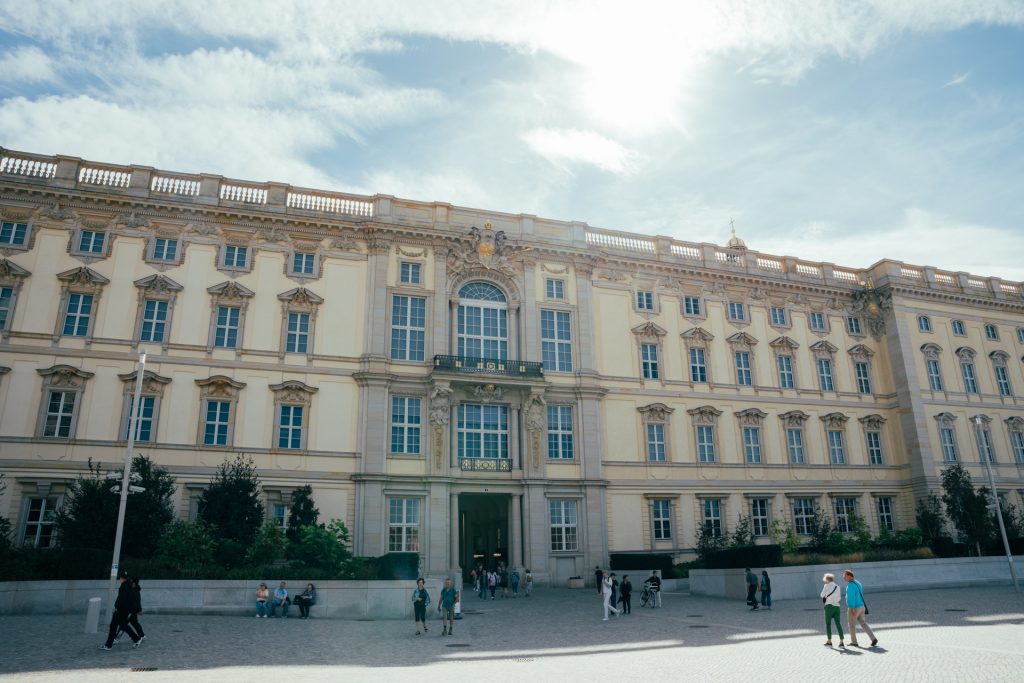
Roof Terrace Views & Baret Restaurant
So we rode the elevator up and were thrilled to discover 360-degree vistas showcasing the city’s sights. The guard had told us about the two options. You can visit by buying a $3 Euro ticket accessible via an elevator. Space can be limited, so you can buy your ticket here.
The second option is to visit the Baret Restaurant, which also has access to the terrace. The restaurant is beautiful, but we chose to have some drinks outside and enjoy the views.
Sipping a German beer as we gazed out at the Fernsehturm television tower, Berlin Cathedral, Museum Island, and beyond was well worth it. The bird’s eye views were breathtaking!
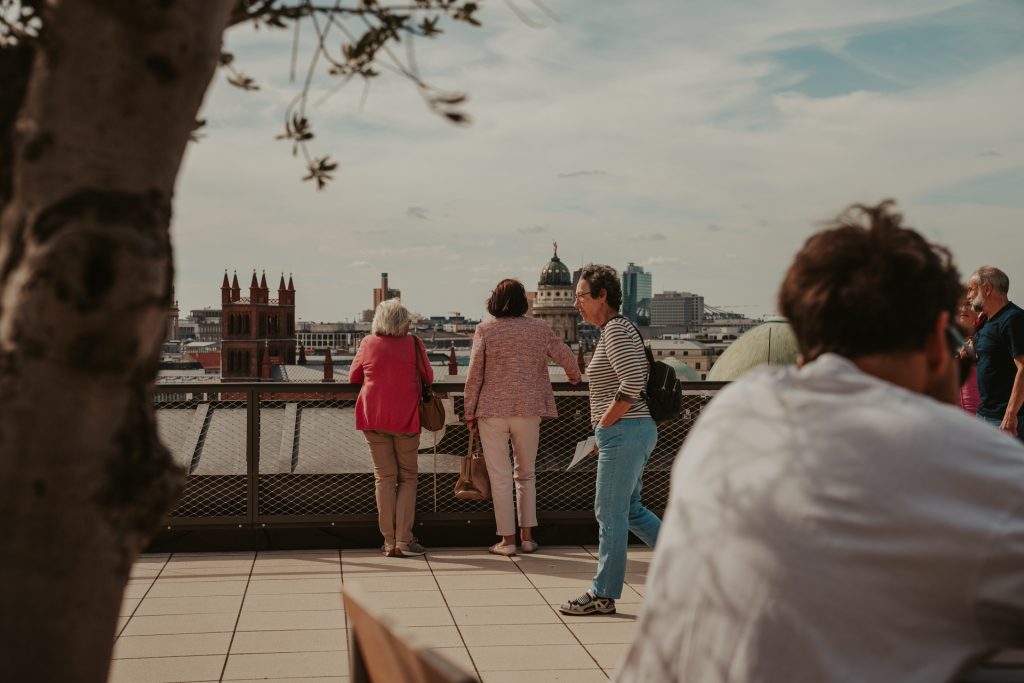

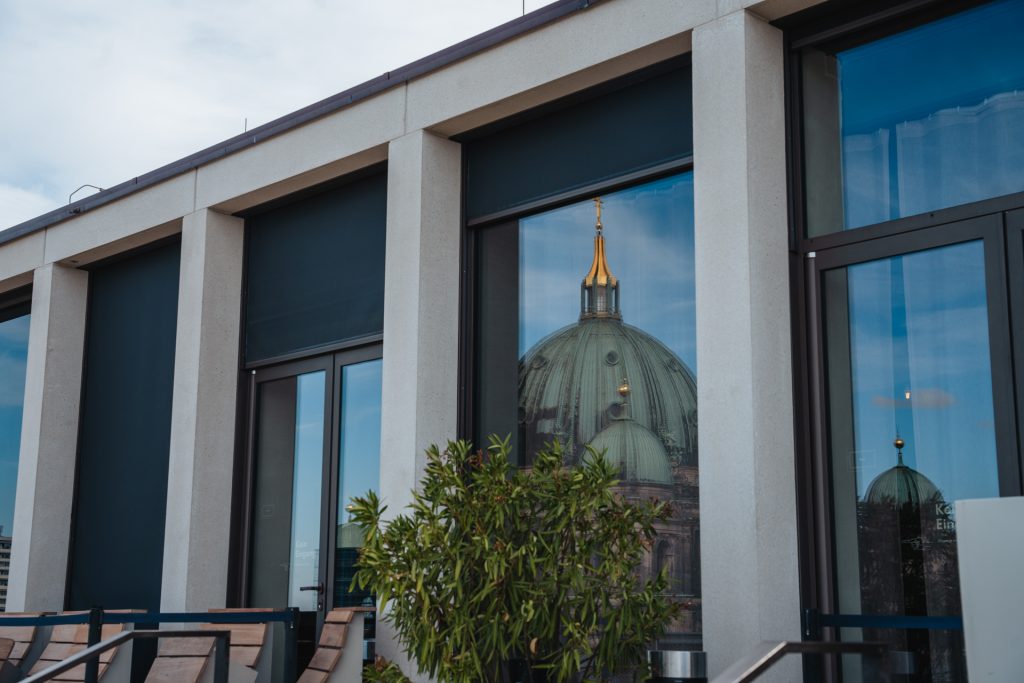
The food looked delicious but we didn’t have time to eat.
Day 3 in Berlin
This was a short day for me, so I headed to get my hair done and do some shopping at the mall while Max, my husband, went across town to an Adidas store to find a German soccer shirt for our son. I got my nails done, too!
We met up, and I tried some yummy poutine at the mall.
For a better 3 Days in Berlin Itinerary, see my suggestions below.
Day 1:
- Start your day early (no later than 10 am) at Alexanderplatz
- Visit the TV Tower for a panoramic view of the city
- Walk to the Berlin Cathedral and Museum Island
- Visit the Pergamon Museum
- Take a stroll through the Tiergarten Park
Day 2:
- Start your day at the Brandenburg Gate
- Visit the Reichstag Building.
- Take a walking tour of the Berlin Wall
- Visit the East Side Gallery
- Enjoy a traditional German meal at a local restaurant
Day 3:
- Have a late brunch at a café by the Landwehr Canal or the Neukölln Ship Canal
- Stroll along the Spree River by the canal
- Visit the Charlottenburg Palace
- Explore some of the historic parks and sights around the city that date to World War II
Note: If you have more time, consider taking a day trip to Potsdam or another nearby city.
Overall our trip was filled with history, wander, food and also relaxation. Add Berlin to your bucket list.


